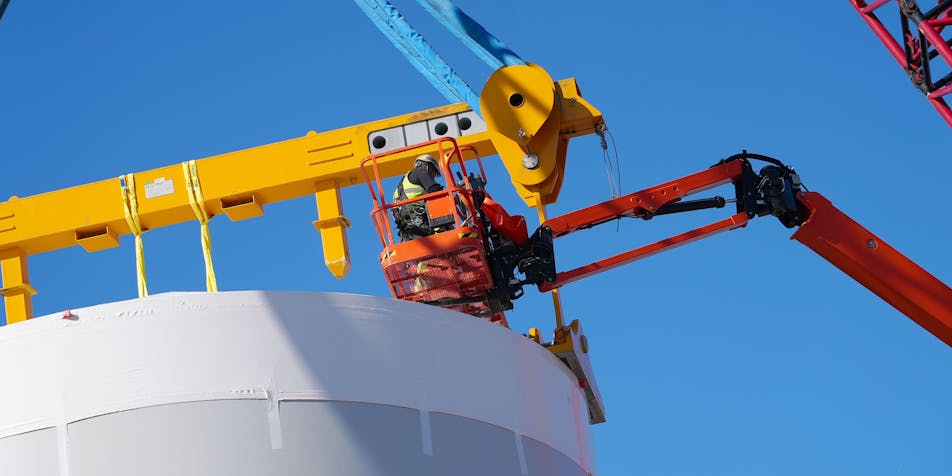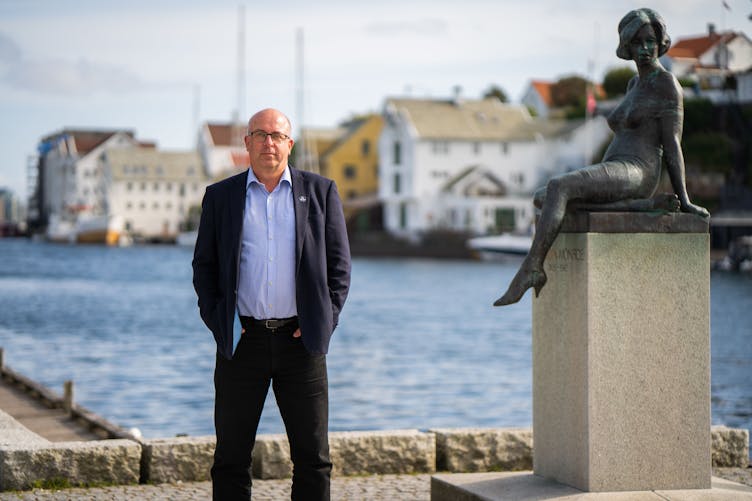Norwegian offshore wind ports can create billions in value annually by 2030

A new report from Menon Economics finds that Norwegian ports investing in offshore wind can generate NOK 8.4 billion in annual value and employ approximately 6,400 people by 2030.
The report was commissioned by Norwegian Offshore Wind, Eksfin, Invest in Rogaland, Invest in Bergen, and Invest in Agder. It's the first of its kind to analyze the potential of Norwegian assembly and installation ports in offshore wind until 2030.
The study has identified 14 installation and assembly ports with plans to facilitate projects for offshore wind farms by 2030, indicating significant potential for employment and value creation. These ports collectively aim to achieve an annual installation and assembly capacity of 5 GW by 2030, equivalent to approximately 350 wind turbines annually.
-This analysis shows that Norwegian offshore wind bases are ahead of the curve. They see that collaboration is a crucial strategy to harness the vast opportunities in offshore wind, says Arvid Nesse, the head of Norwegian Offshore Wind.

Menon assesses that the greatest potential for Norwegian ports lies in floating offshore wind, as the market for fixed-bottom installations is more mature, and the associated port infrastructure is more developed. For floating offshore wind, installation and assembly also represent more activity at port facilities. However, in the export market until 2030, fixed-bottom installations will dominate, but growth related to the floating offshore wind market is expected to accelerate after 2030. To address the floating offshore wind market up to 2035 and beyond, capacity must be built earlier, according to the report.
The analysis finds that offshore wind will become a significant export industry for the ports, particularly for projects close to Norway. Offshore wind development will be especially significant in the North Sea, an area estimated to have an accumulated capacity of 72 GW by 2030. Menon's calculations suggest that installation and assembly ports supplying the North Sea offshore wind development should have an annual capacity of 12 GW by 2030, nearly four times the existing capacity.
-This shows that we need a port expansion in Norway, and the government must come up with a committed plan for the development of Norwegian ports and bases, says Nesse.
In their calculations regarding employment and value creation, Menon assumes that only 50% of the capacity claimed by the ports will be realized. In that case, the port industry would lead to approximately NOK 8.4 billion in value creation and around 6,400 full-time jobs annually until 2030.
-Now, the industry is very focused on reducing the costs of offshore wind, something we are heavily dependent on for a large-scale effort. Therefore, it is also essential to highlight the positive ripple effects this industry already has in the short term, says Nesse.
The analysis includes only ports with concrete offshore wind plans until 2030. Menon Economics notes that there are more ports interested in offshore wind beyond 2030.
-This shows that we need a port expansion in Norway, and the government must come up with a committed plan for the development of Norwegian ports and bases
Arvid Nesse, Norwegian Offshore Wind
The 14 ports in the analysis were asked about the major barriers to their success in offshore wind. Financing is a challenge they highlight, as well as access to sufficient land for expansion. Several also point out that the pace of offshore wind development remains unpredictable.
-We have long emphasized to the government that the industry needs a committed timeline for future tenders, with volume and capacity per round. This analysis shows that this is particularly important for the ports to make the right investments, says Nesse.
Join our newsletter
Get weekly updates from the industry and other Norwegian Offshore Wind content
Sign up here

